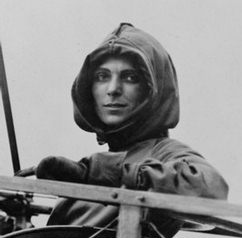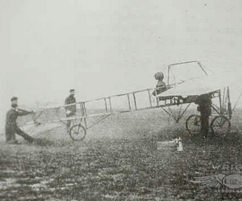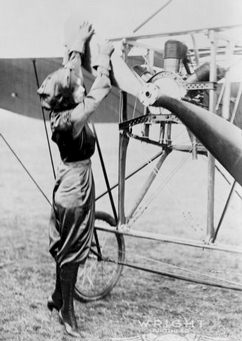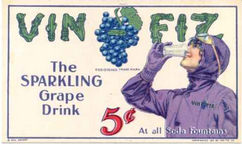|

 Up
Up 
 Pilots,
Pilots,
Planes
and Pioneers

(You are here.)
 Down
Down




  Need
to Need
to
find your
bearings?
Try
these
navigation aids:
If
this is your first
visit, please stop by:
Something
to share?
Please:



|
|
Available in Française, Español, Português, Deutsch, Россию,
中文,
日本, and others.
 hile
the Wright brothers may have been the first to make a sustained,
controlled flight, they were just two among hundreds of brave men
and women who helped to give the world its wings during the earliest
days of aviation. Their Flyer was but one of many historically
important aircraft. Below are brief descriptions and photos of some
of the most important people and planes, and where available
resources and links where you can find more information. In some
cases, contributors have supplied expanded
histories and biographies. Those are listed at the right and linked below. hile
the Wright brothers may have been the first to make a sustained,
controlled flight, they were just two among hundreds of brave men
and women who helped to give the world its wings during the earliest
days of aviation. Their Flyer was but one of many historically
important aircraft. Below are brief descriptions and photos of some
of the most important people and planes, and where available
resources and links where you can find more information. In some
cases, contributors have supplied expanded
histories and biographies. Those are listed at the right and linked below.
A
 B
B
 C
C
 D
D
 E
E
 F
F
 G
G
 H
H
 I
I
 J
J
 K
K
 L
L
 M
M
N
 O
O
 P
P
 Q
Q
 R
R
 S
S
 T
T
 U
U
 V
V
 W
W
 X
X
 Y
Y
 Z
Z
|
|
 |
|
Harriet Quimby was a highly successful photojournalist
working for Leslie's Illustrated Weekly in 1910 when she
attended the international air meet at Belmont Park, New York. There
she fell in love with flying. She also met Matilde Moisant and her
brother John Moisant, an aviator and airplane builder. Their brother
Alfred ran a flying school on Long Island, New York. Both Harriet
and Matilde enrolled, Harriet writing about her flying lessons for
Leslie's. On 1 August 1911, she became the first woman pilot
licensed to fly in the United States. (Matilde was awarded her
license a few weeks later.) Harriet began to do exhibition flights,
wearing a distinctive flying suit of purple satin. In March of 1912,
she sailed for England secretly, determined to be the first women
pilot to fly the English Channel. She had written Bleriot to buy a
new two-seat, 70-horsepower monoplane to fly in Europe, but is was
not ready when she arrived. So Louis Bleriot loaned her his own
aircraft and she crossed from Dover to
Calais on 16 April 1912. Upon returning to America with her
new Bleriot, the Vin
Fiz company engaged her as their spokewoman for their soft
drink and featured her likeness (in her purple flying suit) on many
advertisements. At the Third Annual Boston Aviation Meet on 1 July
1912, she lost control of her Bleriot airplane and she and her
passenger fell to their deaths. Her flying career lasted only 11
months, but inspired many women to fly.
* |

Harriet Quimby.

Quimby prepares to take off from Dover in her borrowed Bleriot.
|

Quimby in her trademark purple satin flying suit starts the engine
of her Bleriot monoplane..

A collector's card showing aviatrix Harriet Quimby enjoying a glass
of Vin Fiz soda.
|
 |
|
|
|

